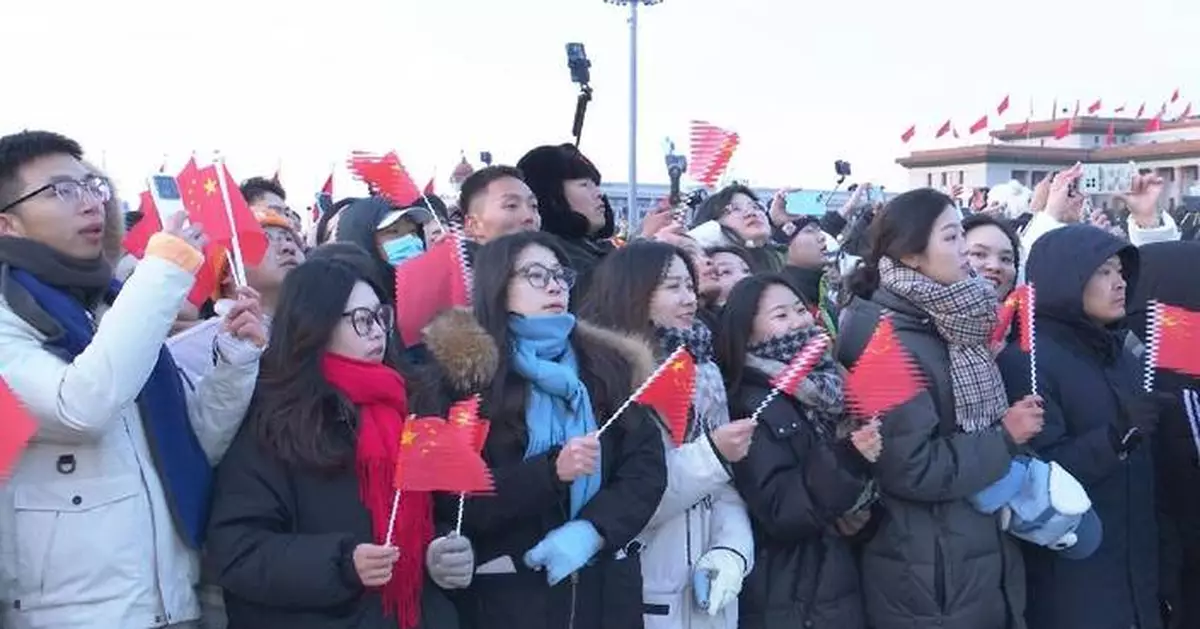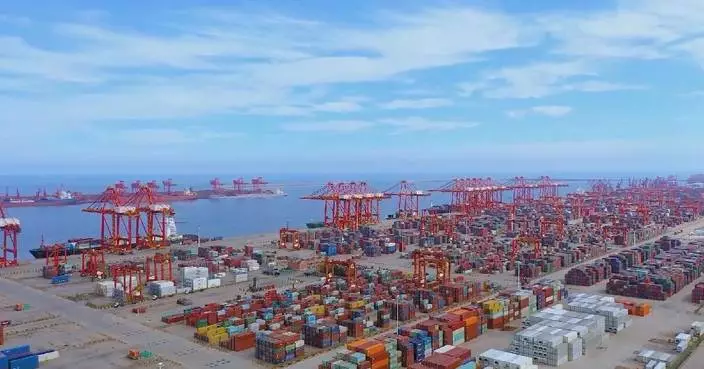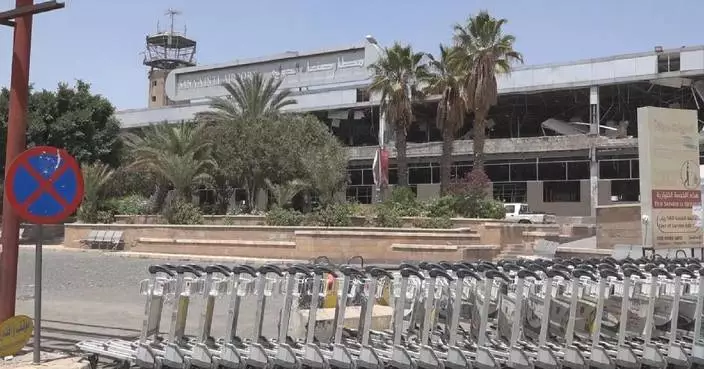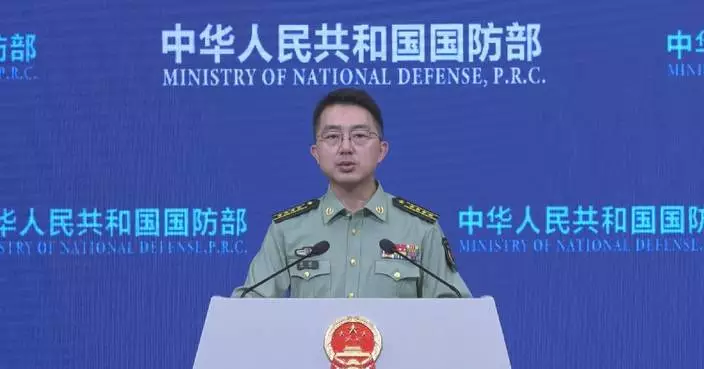Thousands of tourists and locals gathered at Tian'anmen Square in Beijing on Wednesday morning, braving the freezing winter cold to witness the New Year's first flag-raising ceremony.
As the sun slowly rises above the horizon, the military band began playing the Chinese national anthem, and the giant red flag was hoisted to the top of the mast.
After witnessing the red flag reached the top of the mast, the crowd at the square erupted in applause and cheers.
"We wish our country enjoy harmony and prosperity!" said the visitors attending the ceremony.
Many of the spectators lined up outside the square at midnight to get a good spot, despite freezing temperatures of about minus eight degrees Celsius.
"We arrived before 3:00. We are university students in Beijing and watching the flag-raising ceremony here tops the must-do list for us since we study and live in the capital," said a visitor.
For some, the solemn flag-raising ceremony gave them a sense of inspiration to kick-start a new year with hope to fulfill their goals.
"Every time I watch the flag-raising ceremony, I feel emotional and deeply moved. This year, I hope to achieve more at work, contributing to our country's development," said a visitor.
Some visitors have traveled a long way from across the country to welcome the new year with this ceremony and share the moment of unity and national pride.
"We came all the way from Shenzhen to witness the flag-raising ceremony. It's an exciting experience. For the New Year, I wish everyone happiness," said a visitor from the tech hub of Shenzhen in south China's Guangdong Province.
"I come from Sichuan Province and I'm a member of the Tibetan ethnic group. Watching the flag-raising ceremony on the first day of the year feels truly meaningful. For 2025, I wish good health for my family, friends and loved ones," said another visitor from southwest China's Sichuan Province.
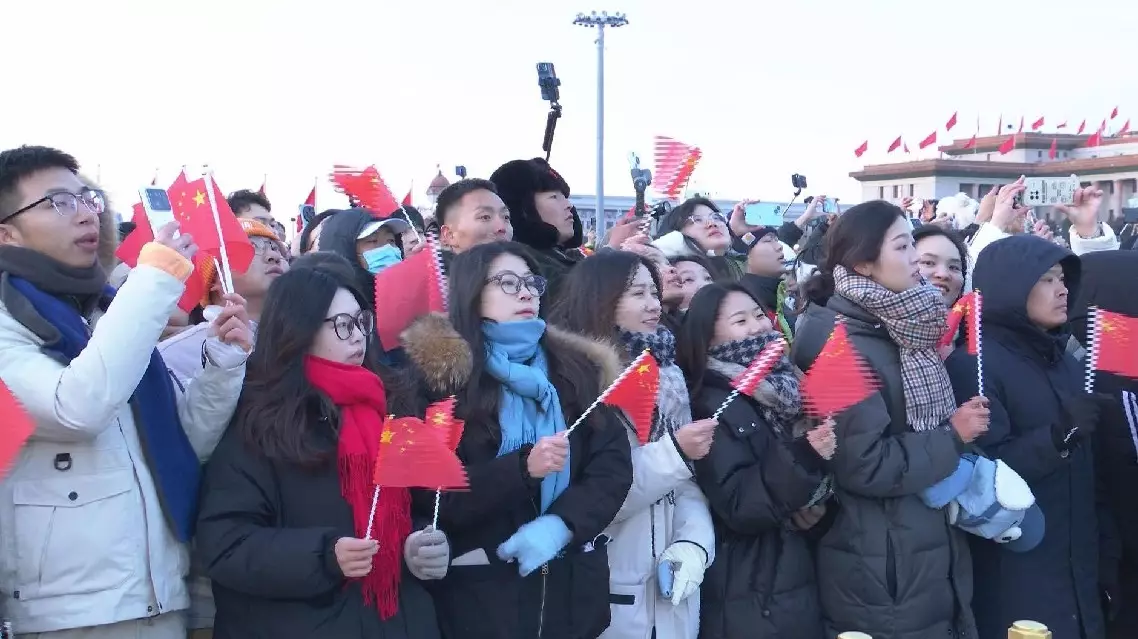
Tourists, locals gather in Tiananmen Square to watch first flag-raising ceremony of 2025


